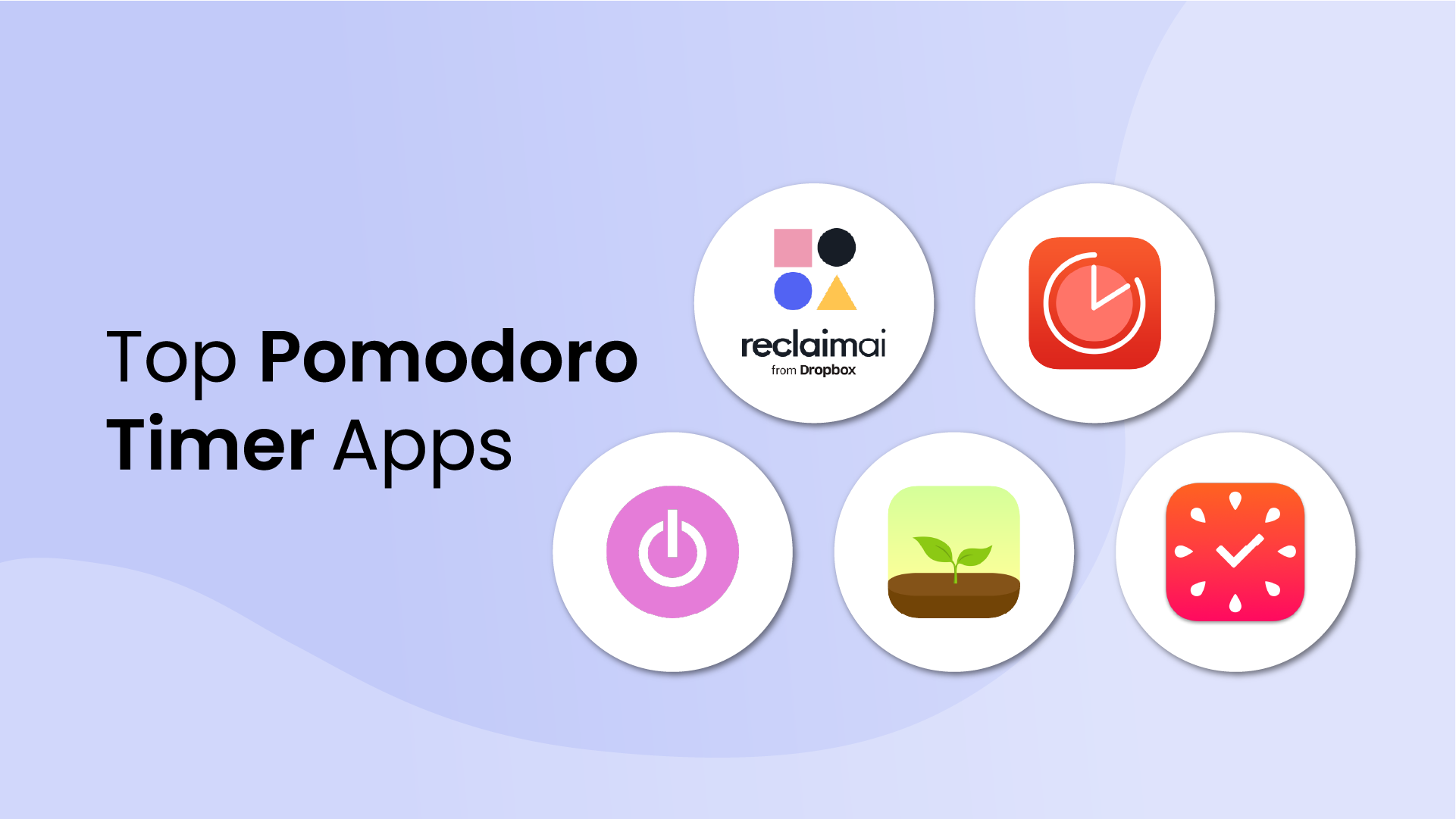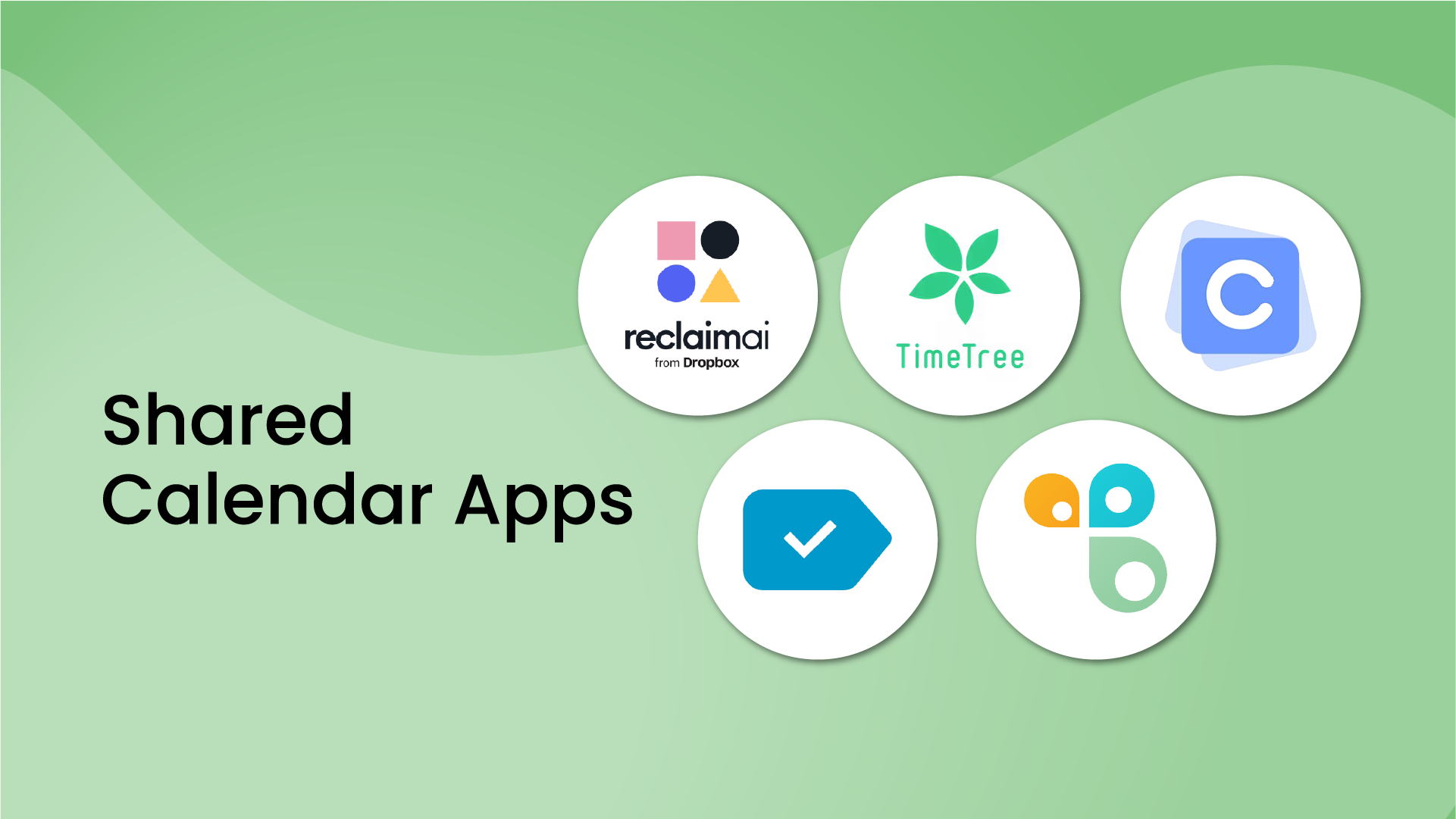Halfway through the year, you find a sticky note that says “get promoted” and realize it floats between today and someday. One of those too big for a to-do list, too near for a life plan type of things. In other words, a “medium-term goal.”
Long-term goals and short-term goals, to tell you the truth, are often a bit easier to conceptualize. Medium-term goals might feel a bit fuzzier. Some people might not view them much differently from a short-term goal. I mean, aren’t we overcomplicating things here?
Not necessarily, but I don’t expect you to just take my word for it. Let’s walk through why medium-term goals are worth thinking about alongside the short and long 👇
What is a medium‑term goal?
A medium-term goal is an outcome you want to achieve in 1-5 years that turns a long-term goal into tangible milestones and short-term work pointed in the right direction.
Alright, there’s the formal definition. The simplest one is that medium-term goals sit between short-term and long-term goals. I know, pretty crazy, right? But these important bridge goals are almost always the most neglected as people feel they’re redundant or unnecessaryIf you have a long-term goal, it’s easy to imagine many short-term goals that might fit into that larger aspiration. However, the most vulnerable part of any goal-attainment journey is often deep in the middle. In other words, the medium term.
Example medium goal
Mid term goal to complete a professional certification within two years, bridging the gap between a short-term skill-building course and a long-term career change.
|
But having some clear medium-term goals is how you maintain progress, even when the big finish line is very far away. It sustains motivation by making long-range aims feel within reach. And it improves measurability by giving you a timeframe where leading indicators and course corrections actually work.
What’s the difference? Medium vs. short vs. long
|
Short-term goals |
Medium-term goals |
Long-term goals |
| Timeframe |
Days to 12 months |
~1–3 years (up to 5, depending on context) |
5–10+ years |
| Primary aim |
Execute tasks and prove tactics |
Bridge strategy to results – convert vision into sequenced milestones |
Set direction and define the big outcomes |
| Scope & certainty |
Narrow scope – high certainty |
Cross-functional scope – moderate certainty with planned course-corrections |
Organization-wide scope – high uncertainty |
| Planning cadence |
Weekly/monthly; frequent check-ins |
Quarterly reviews aligned to annual themes with check in points as milestones |
Annual strategy cycles; periodic refresh |
| Typical artifacts |
To-dos, sprints, SMART tasks |
Objectives with quarterly key results, roadmaps, budgets |
Vision, scenarios, multi-year portfolio |
| Good for |
Quick wins, skill building, experiments |
Scaling what works, hitting step-change metrics, de-risking investments |
Market position, transformational bets, enduring advantages |
| Success signals |
Activity/output metrics |
Outcome metrics across multiple quarters |
Lagging impact metrics over years |
Surprise, surprise, but the main difference between short, medium, and long-term goals is the timeframe:
- Short-term goals cover days to roughly 12 months and often manifest as immediate action, typically by breaking down larger goals into smaller tasks to manage progress.
- Medium-term goals span 1 to 3 years (sometimes even stretching to 5 in certain contexts) and convert your ambitions into sequenced milestones that stack over time.
- Long-term goals look 5-10 years out and define the ultimate destination.
In the short term, we work in weekly or monthly cycles, with sprints and SMART goals driving activity and output. In the medium term, we zoom out each quarter to line up with the year’s themes and track outcomes through things like OKRs that build on each other, using check in points as milestones to monitor progress and make adjustments. For the long view, we plan in annual or multi-year arcs, use scenario thinking to guide choices, and watch lagging impact metrics for signs of durable progress.
In practice, the three horizons act like a ladder: short-term wins create traction, medium-term execution turns traction into step-change results, and long-term vision keeps the effort aimed at the future you want to reach.
Top 60 medium‑term goal examples
Need some inspiration to set your own medium-term goals? Here are 60 real-world examples across a bunch of different areas to spark your thinking and get you moving in the right direction.
Career & skills medium-term goals (examples 1-10)
- Earn an industry certification in 18 months. This sets a clear target for professional credibility and opens up new career opportunities. Regular study hours and practice tests provide the structure to stay on track.
- Lead a cross-functional project by Q4 next year. Successfully coordinating multiple teams demonstrates leadership ability and visibility across the company. Deliverables and stakeholder feedback can serve as progress checks.
- Publish 6 thought leadership articles and deliver two talks in 24 months. This establishes expertise in your field while building a professional brand. Milestones like drafting, pitching, and presenting ensure steady momentum.
- Level up analytics capability within 12 months. Gaining certifications and publishing portfolio projects makes data skills tangible. This accelerates problem-solving power and career progression.
- Earn a promotion to senior role in 30 months. Promotions depend on consistent delivery and new responsibilities. A structured plan of projects, mentorship, and skill development makes the path realistic.
- Build a small team within 9 months. Hiring and onboarding two employees demonstrates management capability. Success is measured by ramp-up and retention rates.
- Improve code quality in 12 months. Reducing defect rates and increasing test coverage ensures more reliable releases. Regular code reviews and tracking metrics keep progress visible.
- Launch a structured A/B testing program within 12 months. Running 12 experiments in a year provides a data-driven culture. Documentation and cadence prevent ad-hoc testing from slipping.
- Expand professional network by 200 quality contacts in 2 years. Attending conferences, posting online, and intentional outreach help strengthen visibility. Building connections pays off with mentorship and opportunities.
- Mentor at least 3 junior colleagues over 18 months. Structured mentorship sessions improve team performance and reinforce your own leadership skills. Tracking mentee growth makes the impact clear.
Personal finance medium-term goals (examples 11-20)
- Save $80,000 for a home downpayment in 4 years. Regular automatic transfers and side income provide a predictable path. Annual progress checks ensure long-term feasibility.
- Pay off $25,000 in student loans in 30 months. Aggressive repayment shortens interest timelines. Tracking monthly payoff balances keeps motivation high.
- Build an emergency fund equal to 6 months’ expenses in 18 months. Automatic savings and expense reviews protect against uncertainty. Progress milestones create peace of mind.
- Increase retirement contributions from 8% to 18% in 36 months. Incremental increases prevent financial stress while building long-term security. Automated contributions reduce friction.
- Improve credit score from 680 to 760 in 24 months. Paying on time, lowering utilization, and disputing errors steadily lifts scores. Regular monitoring reinforces good habits.
- Save $12,000 for a car purchase in 18 months. Monthly contributions and discretionary spending caps make the target realistic. Milestones at the halfway point keep you motivated.
- Contribute $10,000 to a 529 education fund in 24 months. Regular contributions build future tuition security. Gift contributions from family can accelerate the plan.
- Reduce fixed monthly expenses by 15% in 12 months. Renegotiating contracts and shifting plans frees up money for savings. Regular audits ensure progress is permanent.
- Establish a $5,000 travel fund in 2 years. Dedicated savings for trips prevent debt from spontaneous spending. A set cadence of contributions ensures affordability.
- Invest $25,000 into a diversified portfolio over 3 years. Automated contributions and annual rebalancing provide long-term growth. Tracking performance keeps allocation on target.
Health & fitness medium-term goals (examples 21-30)
- Complete an Olympic-distance triathlon within 24 months. Structured training builds endurance across swimming, biking, and running. Race milestones along the way make the journey measurable.
- Reduce body fat from 28% to 20% in 18 months. Nutrition, strength training, and sleep habits work together. Progress tracking by measurements or DEXA scans ensures accuracy.
- Run a marathon under 4 hours in 18 months. Progressive training plans improve pace and endurance. Smaller races act as checkpoints to stay aligned.
- Improve mobility score from 12 to 16 in 12 months. Dedicated sessions enhance long-term health and prevent injury. Regular assessments confirm incremental progress.
- Increase average sleep from 6.2 to 7.5 hours in 12 months. Tracking routines and removing stimulants improve quality. Better sleep boosts energy and overall wellbeing.
- Lower LDL cholesterol to clinician-targeted range in 12 months. Exercise, diet, and medical plans guide this outcome. Regular labs and lifestyle check-ins measure success.
- Finish 12 fitness challenges over 2 years. Challenges like 5Ks, obstacle runs, or virtual events add variety. Tracking completions keeps goals fun and achievable.
- Hit a strength milestone of 1.5x bodyweight squat in 15 months. Structured progression programming ensures safety. Documented lifts provide proof of progress.
Learning & creativity medium-term goals (examples 31-40)
- Reach B2 French proficiency in 24 months. Tutoring, flashcards, and immersion all contribute. Mock exams track readiness.
- Publish a 30-image photography portfolio and show in 2 exhibits in 18 months. Regular shoots and editing build the body of work. Submissions to galleries make outcomes tangible.
- Read and annotate 24 books in 12 months. A daily reading schedule and note-taking system deepen learning. Sharing insights adds accountability.
- Launch a public web app MVP in 12 months. Consistent development and user feedback guide the build. Adoption metrics confirm success.
- Compose and release a 5-track EP in 15 months. Writing, recording, and mixing require steady discipline. Publishing on streaming platforms provides a clear milestone.
- Earn a UX certificate and publish 3 case studies in 12 months. Coursework and applied projects strengthen career readiness. Documenting outcomes makes skills visible.
- Write a novel draft in 18 months. A set word count target each week drives progress. Feedback loops from peers add accountability.
- Complete 10 online courses in 2 years. Spreading across varied topics broadens knowledge. Course completions act as measurable milestones.
Family & relationships medium-term goals (examples 41-50)
- Take 12 family trips over weekends in 3 years. Planning in advance and budgeting makes it sustainable. Photos and reflections mark the memories.
- Maintain 40 date nights per year for 3 years. Consistency strengthens relationships. Calendar reminders and shared ideas reduce friction.
- Establish a weekly family tradition for 2 years. Rituals like game nights or hikes build connections. Logging each one keeps momentum.
- Improve family life by setting & achieving family goals over 2 years. Strategic planning and regular check-ins can strengthen family dynamics and overall well-being. Use goal-setting techniques tailored to your household and track progress together.
- Organize a family reunion within 18 months. Collect addresses, choose a venue, and send invitations with careful planning and timing. A well-organized family reunion can enhance family relationships and create lasting memories.
- Develop a care coordination plan within 12 months. Reducing caregiver stress through support systems is measurable. Shared calendars and surveys track effectiveness.
- Host 6 extended-family gatherings in 2 years. Coordinating larger events fosters broader family ties. Attendance and satisfaction can be used as metrics.
- Create a family media album of 500 curated photos in 18 months. Intentional curation preserves memories. Uploading regularly keeps the project on track.
Small business / side projects medium-term goals (examples 51-60)
- Grow to $25,000 MRR in 30 months. Pipeline volume, activation rates, and renewals track growth. Milestone revenue targets provide checkpoints.
- Launch v2 of product with NPS ≥ 45 by Q4 next year. User research and beta feedback shape success. Monitoring customer satisfaction ensures quality.
- Reduce churn from 8% to 4% in 18 months. Time-to-value improvements and better support drive retention. Regular reviews keep momentum.
- Enter 3 new markets within 24 months. Research, partnerships, and localized landing pages measure expansion. Revenue per market validates success.
- Publish 50 blog posts to boost brand awareness 30% in 2 years. A steady publishing cadence compounds SEO and reach. Tracking traffic ensures ROI.
- Build an email subscriber list of 20,000 in 24 months. Lead magnets and consistent newsletters drive growth. Subscriber engagement validates value.
- Secure 10 strategic partnerships in 2 years. Partnerships unlock growth faster than solo efforts. Signed agreements serve as tangible proof.
- Launch a crowdfunding campaign within 18 months. Hitting a defined funding target demonstrates traction. Backer count and funding pledged provide clear metrics.
How to set medium‑term goals (step‑by‑step)
You’ve got the vision and the day-to-day. Now let’s learn how to set goals for the middle👇
1. Choose clear, challenging goals to stretch yourself
When setting medium-term goals, being specific matters a lot. This approach is especially effective for both personal and professional goals. Skip the vague ambitions like “get better at marketing.” Pick concrete outcomes that challenge you to grow, such as “Generate $250k in new revenue from channel X by June 30.”
Why specific and challenging? Because clearly defined goals sharpen your focus, help you stay focused on your objectives, and help you push through obstacles. Decades of research across 100+ tasks and 40,000+ participants back this up: you’ll consistently perform better with precise, ambitious targets than with broad intentions to “do your best.”
2. Track your progress with clear success metrics
Every medium-term goal needs a way to measure success. Pair your medium-term goal with a few smaller, weekly actions that signal you’re on track. For example, if your outcome is “Finish writing my novel,” your weekly indicators might be “pages drafted” or “hours spent writing.”
Why track smaller indicators alongside the big outcomes? Because it keeps you focused on what you can control day-to-day and serves as proof you’re always moving in the right direction. Tracking these steps not only maintains momentum but also leads to further progress toward your long-term objectives.
3. Pressure-test your medium-term goal
Before committing fully, give your medium-term goal a quick stress test using WOOP:
- Wish: Clearly state your goal.
- Outcome: Describe exactly why achieving it matters to you.
- Obstacle: Anticipate the biggest roadblock you might face.
- Plan: Make a simple “if–then” plan to overcome that obstacle, and remember to remain flexible in your approach as circumstances may change.
For example, you might say, “If it’s 7:00 PM, then I’ll put my phone away and spend an hour writing.”
Why does this help? Because research consistently shows that pairing your goals with concrete “if–then” plans increases your chances of success by preparing you mentally for obstacles before they show up.
4. Step back & anticipate what could go wrong
What if, after developing your medium-term goal and working towards it for, let’s say, six months, you find that things aren’t going exactly as planned? What do you do then?
Don’t panic! Just ask yourself: “What’s the most likely reason this didn’t work out?” Make a quick list of those potential roadblocks, and be sure to spend time reflecting on possible challenges and solutions before moving forward. Then flip each one into a plan for preventing it or dealing with it proactively.
You can also set “tripwires,” or clear checkpoints that signal when it’s time to pivot or adjust your approach. Research shows this quick “pre-mortem” helps uncover hidden pitfalls early, protecting you against overconfidence and unexpected problems.
5. Turn your actions into habits with consistent cues
Take all those actions critical to reaching your goal and link them directly to stable, everyday cues. For example, “After my morning coffee, I’ll spend 20 minutes journaling,” or “Every Tuesday and Thursday at 7 a.m., I’ll go for a run.”
Why tie actions to specific triggers? Because habits form faster when anchored to consistent routines. Studies suggest it typically takes about two months (with plenty of variation!) for a habit to stick. Using predictable daily cues helps speed up that process, turning your most important behaviors into second nature. And, as a bonus, building these consistent habits also helps you develop life skills that support long-term success.
6. Keep your progress visible & check in regularly
Set up a simple dashboard or tracker to monitor your key metrics, both the big outcomes and the smaller weekly actions. Schedule a quick weekly check-in to adjust your immediate tasks and a deeper monthly review to refine milestones or strategies.
Seeing your progress in real-time is motivating and increases your chances of reaching the goal. Research even suggests you’re more likely to succeed when you write down and regularly review your progress, especially if you share it with others.
7. Adapt the difficulty as you go
Goals, medium-term or otherwise, shouldn't be set-and-forget. Use your regular reviews to fine-tune how challenging your goal is. If you find yourself easily surpassing your targets, push the bar higher. On the other hand, if you're consistently falling short despite steady effort, narrow your focus or extend your timeline.
Staying in this sweet spot keeps your motivation high and leads to stronger overall results.
Maintain your momentum with medium-term goals 🚀
Medium-term goals might not be as flashy as long-term visions or as immediate as short-term tasks, but they're exactly what you need to bridge ambition and action. Hopefully, these examples and the goal-setting steps provided give you the clarity and structure you need to tackle those important, but often overlooked, milestones.
And when it comes to tracking your progress and making goals a daily reality, tools like Reclaim.ai can help keep you organized, balanced, and productive. Reclaim makes it easy to set priorities, block out focused time, and adapt your schedule so your goals don’t just stay on a sticky note, but actually become part of your everyday routine.




































